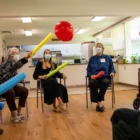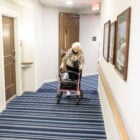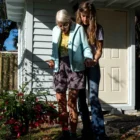Money in Politics
Public blind to money flowing to lawmakers as session kicks off
|
As the New Mexico legislative session kicked off this week, the public was blind in one very important respect.
Marjorie Childress, New Mexico In Depth
In the next four weeks, lawmakers will create a state budget worth at least $10 billion dollars, pass another quite large capital outlay budget, and pass influential tax and policy bills. But who gave money to those lawmakers in the last quarter of the year – in the form of campaign contributions – will largely be a mystery. That’s because lawmakers aren’t required to file a public report in January about campaign contributions they received in the run-up to the legislative session, if they didn’t run for office the year before.
Since no lawmakers ran for office in 2023, we do not have a comprehensive data set showing the money that flowed into campaign accounts in the final months of 2023. Their last reports reflect contributions through Oct. 7, 2023, and we won’t have an update until April, when their next reports are due.I’ve been looking at campaign filings for many years. I promise you that among year-end contributors will be corporations and often, their owners and employees. There will be executives and public relations specialists for trade associations, labor unions, and public policy organizations.
Some of those contributors will be registered as official lobbyists for their organizations, and in those cases we can see what they gave because lobbyists must file a January report. But while the reports of 100 or so lobbyists, or of their employers, are highly consequential, they are just a slice of the money flowing into the campaign accounts of lawmakers. A fuller picture would allow the public to comb through reports by address, employers, and occupation, and better understand how much money lawmakers are getting from a particular industry, special interest group, or simply from a handful of big donors. Last year, lawmakers were poised to pass a bill with several transparency measures, including one that would have shifted the reporting schedule to capture donations at the end of the year in a January report, showing how much money was given to lawmakers in the run-up to the legislative session.









